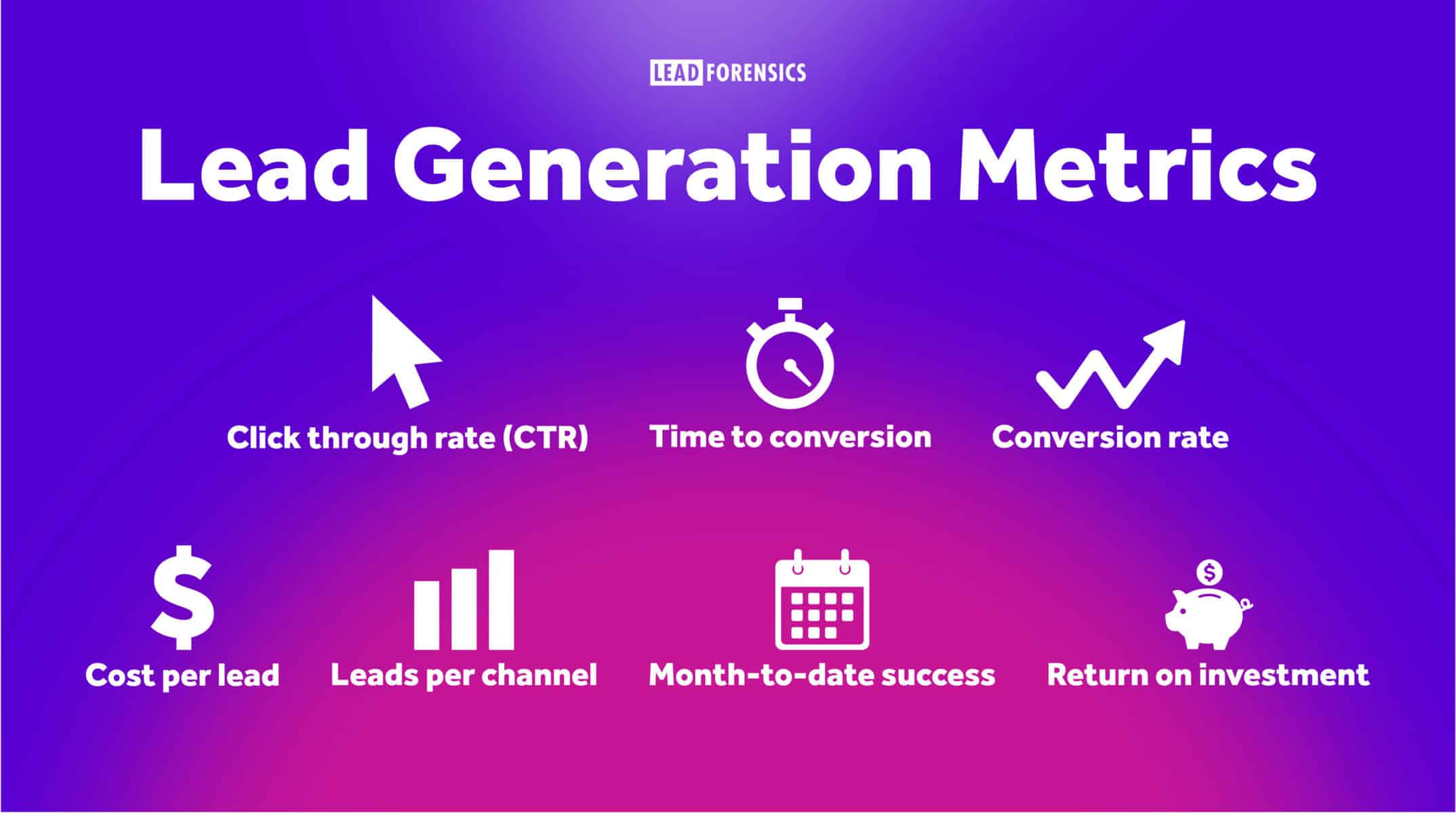A metric is a strictly numerical measure, offering teams objective data clearly outlining desired details; but which metrics are best to measure in lead generation?
With so much marketing activity covering a variety of channels, gathering the vital data you need can be a challenge. Here’s eight essential lead generation metrics you need to measure for success!
Click through rate (CTR)
Click through rate measures the number of clicks or submissions a call-to-action receives. Whether on your website, through an email, social media post or PPC advert, measuring the click through rate of CTAs offers your team detailed understanding of what messages successfully convert your audience, and which channels these messages excel on.
Calculated by dividing your number of clicks by the number of website visitors, recipients or advert impressions (people who have viewed your CTA), then multiplying the result by 100, your click through rate appears as a percentage. E.g. If 1,000 people viewed your PPC advert, and 200 clicked on it, you achieved a CTR of 20%.
This metric focuses on digital lead generation strategies that specifically include links. If you send an email or direct social media message without including a link, there is nothing for the recipient to click through to, so you cannot measure click through rate.
Conversion rate
An essential metric to lead generation success, conversion rate outlines how many prospects, website visitors, contact recipients etc. take the desired action and move onto the next stage of your buyer journey.
Similar to click through rate, this is depicted as a percentage; taking the amount of successful conversions and dividing it by people coming into contact with your marketing campaign and multiplying by 100.
Though this metric is ordinarily linked specifically to website conversion (success in gaining new business inquiries from website visitors), it can be easily applied to many lead generation channels, helping your team understand how much data and outreach is needed to produce desired results.
Time to conversion
Measuring the time taken between key conversion steps in your buyer journey offers vital insight. Discovering how many hours, days or weeks stand between a prospect discovering your brand and inquiring about your product, or between sitting a product demo and signing a contract is hugely telling.
This metric is easy to calculate; let’s say for example you wanted to measure the time to conversion of your email campaign last year, total the amount of time every email lead you generated last year spent between their first email received and their inquiry reply, then divide by the total number of leads.
This will tell you exactly how long it takes a lead to discover your brand and learn enough to convince them they need your product/service. This enlightens your team to possible distractions between vital processes and ask how a more instant state of conversion can be achieved.
Cost per lead
CPL (cost per lead) does what it says on the tin- measures the amount each lead costs your marketing team. Of course, a low CPL is positive, you’re getting lots of lead for less money, and you’re more likely to secure a happy return on investment.
Dividing the total money spent on lead generation by the number of leads acquired shows how much each lead costs your marketing team and offers incredible perspective.
The average cost per lead varies based on industry and marketing channels used but tends to fall between $25-100. This metric is important to know, as if every lead costs you $100, you’ll want to ensure they’re high-quality, and properly handled by your sales team to produce return.
This figure also prompts your team to ask the question- is our approach the cheapest? Understanding CPL can help ensure you’re using the best value solution, offering high-quality chances to gain positive revenue return.
Leads per channel
Whilst every lead generation channel will have its own set of important metrics to help you improve channel campaigns and strategy, simply understanding how many leads are generated per channel is key.
Some will undoubtedly deliver more than others, especially if that channel benefits from a larger team or more up-to-date software but looking into the seriously under-delivering channels can be valuable.
If you’ve been trying to generate leads though direct mail campaigns, but compared to other channels, this tactic isn’t delivering a result, it may point to this channel being unpopular with your target audience.
The more you understand ideal buyers and their preferences, the better you can strategically plan future marketing ventures, properly tailored to your target audience.
Gaining insight into the number of leads generated by channel also helps you create targets reflecting channel success. If your department need to generate 300 leads per month, and you know email marketing has higher lead success than social media, assigning 100 to email and 30 to social will be far more beneficial than putting 65 on each.
Knowing which channels consistently deliver, and which do not, could save you a lot of time and money in the future.
Month-to-date success
Knowing where each channel stands against their monthly target every week offers a large range of business benefits. Firstly, it allows you to constantly understand how your results look against committed business numbers, and know whether a recourse is possible, or if you need to exercise contingency plans.
Instead of burying heads in the sand and just carrying on as normal, being aware of your month to date progress helps you stay in control of campaigns, planning details to best meet current needs.
If your email marketing channel finishes week three of a four-week month at 65% of target, they are 10% behind; the sooner they know this, the easier it will be to gather additional data and re-adjust copy before their next send, ensuring the campaign is primed for additional lead success.
Additionally, tracking month to date success is an excellent team motivator; setting small incentives based on achieving monthly percentages can keep your team environment focused and positive, as striving to deliver exceptional results.
Why not revolutionize your marketing with advanced lead generation software that provides new business opportunities, conducts easy reporting and categorizes leads for detailed ROI attribution?
Discover Lead Forensics; our market-leading software identifies the businesses visiting your website and provides contact details for key decision makers, helping your team make instant and impactful follow-up communications, whilst seamlessly managing leads with advanced CRM functions.
Discover the secret to lead generation success – book your free Lead Forensics demo today!
Return on investment
One of the most important metrics of all, return on investment helps your team understand how much revenue return has been gained for specific marketing campaigns.
Considering the amount spent on lead generation efforts and the revenue gained from sales made, return on investment is a vital figure to note when planning future strategies, ensuring you don’t invest additional budget in areas that fail to deliver a result.
Using our revenue calculator you can quickly discover your current return on investment by department, channel, even individual campaigns to help strategize future budget plans and understand which areas could benefit from additional investment.
If you conducted a direct mail campaign for $500 that only generated 9 leads, but made 4 sales of $1000 each, you’ve got some incredible ROI there!
Even if you didn’t reach the specific targets you wanted, the money invested provided an almighty return, proving another direct mail campaign would benefit your strategy and be a sensible use of budget.







